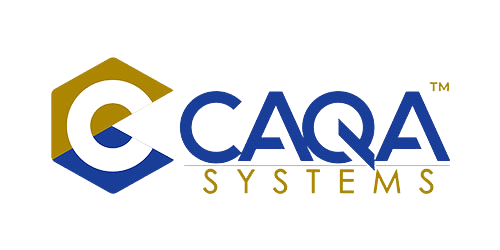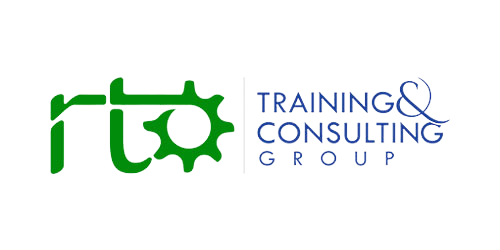Participation at a record high, programs trending to higher levels, and signals for schools, systems and RTOs
Australia’s VET in Schools program has reached a milestone moment. The latest national dataset confirms that vocational learning in senior secondary schooling is not just resilient—it is expanding in scale and shifting towards higher-level qualifications. In 2024, an estimated 266,765 school students participated in nationally recognised VET as part of their senior secondary certificate, a 5.8% year-on-year increase and a 55.4% uplift since the series began in 2006. More than one in four Australians aged 15 to 19 now engages with VET during school, underscoring the central place vocational learning occupies in the senior secondary experience. Participation grew across most jurisdictions, with Queensland continuing to account for the largest share at 39.4%.
Alongside this expansion, school-based apprenticeships and traineeships (SBATs) continue their steady climb. In 2024, 21,515 students were undertaking an SBAT—8.1% of all VET in Schools participants—with an overall upward trend across the past five years. The combined picture is clear: vocational pathways are increasing in popularity with school students who value hands-on learning and structured pathways to work and further study.
What students are studying: a shift up the AQF
Program enrolment trends between 2019 and 2024 show a gradual but persistent shift toward higher qualification levels. Certificate I has contracted from 11.1% of program enrolments in 2019 to 6.6% in 2024. Certificate II remains the single largest level by volume but has slipped as a proportional share, while Certificate III and above have grown steadily in both numbers and share. This recalibration matters: mid- and higher-level qualifications position students with stronger practical skills for workplace entry and smoother progression into post-school VET and higher education.
In 2024, the most popular training packages by program enrolments were Tourism, Travel and Hospitality (56,740, 15.5%), Sport, Fitness and Recreation (50,700, 13.8%), and Business Services (42,120, 11.5%). Completion patterns align closely with this profile, with Business Services recording the highest number of qualification completions (20,015, 15.0%). A notable highlight is the growth in completions for Certificate II in Electrotechnology (Career Start), rising from 2,580 to 3,370—an increase of 30.6%—indicating growing interest among school students in energy and renewables-adjacent pathways.
Scale and composition: who participates and where
The headline participation figure masks important differences by jurisdiction and cohort. States and territories recorded broad-based growth, with Queensland remaining the largest contributor to national totals. Participation rates are calculated using the jurisdiction of the senior secondary assessment authority, and the estimated participation measure uses the submitter’s state as a proxy for residence when student addresses are unknown. While these choices ensure comparability across the time series, they can produce small cross-border effects in localised analysis.
Cohort composition continues to diversify. Female participation rose again; Indigenous student participation grew at a faster rate than the all-student average; and participation among students with disability increased strongly. Regional and remote participation remains a significant component of the overall picture, reflecting the crucial role VET plays in connecting young people to local jobs, training providers and employers.
SBATs: a distinct and growing pathway
SBATs retain a distinct profile within VET in Schools. Most SBAT program enrolments sit at Certificate III, consistent with the apprenticeship and traineeship model and workplace expectations. For the broader pool of “other VET in Schools” students, Certificate II remains the dominant level, though the share of Certificate III continues to rise.
The training package choices of SBAT students echo broader patterns—strong showings in Tourism, Travel and Hospitality; Community Services; and Business Services—but with a higher concentration at Certificate III. This has practical implications for provider capacity and work-based learning arrangements, including supervision, facilities, and scheduling that dovetails with school timetables.
Funding and delivery: public investment and diverse provider roles
VET in Schools remains largely publicly funded. In 2024, the significant majority of qualification enrolments were reported with government funding as the highest source, with domestic fee-for-service playing a smaller role and international onshore fee-for-service activity negligible in this context. This funding profile places a premium on effective contract management, data quality, and performance monitoring to ensure public investment translates into equitable access and credible completions.
Delivery involves a wide mix of providers: schools, TAFE institutes, private training providers, community providers, enterprise RTOs and universities. The distribution continues to evolve, with private providers training a large share of VET in Schools students and schools, and TAFE also retaining substantial roles. The strategic challenge for systems is not to prefer one provider type over another, but to assure quality consistently across this diverse delivery landscape and to match delivery models to local capability and student need.
Method and measurement: how the counts are built
For leaders using this dataset in planning, two methodological notes are critical. First, counts are compiled by the state or territory of the senior secondary assessment authority. Second, the estimated participation rate uses the submitter’s state as a proxy for residence due to the number of records with unknown addresses. The participation denominator is drawn from official school student counts for full-time and part-time students. This approach supports stable, comparable estimates over time, while users should be mindful that small discrepancies can occur when mapping participation to residence-based datasets.
What this means for schools, systems and providers
The 2024 data sends a consistent message on strategy and operations.
VET in Schools is mainstream, not marginal. With more than a quarter of teenagers engaging and total participation at its highest level on record, senior secondary VET is a structural feature of schooling. Schools and systems should plan timetable models, guidance and counselling, and work-based learning opportunities on the assumption that VET will be a core element of many students’ senior pathway—particularly in jurisdictions with historically high uptake.
Programs are inching upwards in level. While Certificate II still dominates, the lift at Certificate III and above alters what “good delivery” looks like in a school context. Higher-level programs often require more sophisticated facilities, closer integration with industry, stronger assessment assurance, and different pacing and support. Where SBAT activity is concentrated at Certificate III, the system must guarantee appropriate supervision and workplace experiences without eroding school-based supports.
Provider partnerships must mature with scale. As delivery diversifies across schools, TAFE and private RTOs, quality assurance needs to be both rigorous and proportionate. Contract settings and school-RTO agreements should codify scheduling, trainer qualifications, industry currency, facilities, assessment validation and moderation, and escalation pathways for at-risk learners. Government funding predominates, so evidence of impact—engagement, progression, completion and successful transitions—deserves the same focus as compliance artefacts.
Student supports should match ambition. A higher share of Certificate III enrolments, more SBATs, and stronger engagement by equity cohorts require active support: targeted careers guidance, catch-up tutoring around peak workplace blocks, pastoral care, and clear language around expectations for attendance, safety and assessment. Schools with sustained growth in VET participation will find that structured contact and progress monitoring are as important in VET as in academic programs.
Industry engagement needs to be practical and local. The enduring popularity of Hospitality, Sport and Business reflects strong employment ecosystems and school capacity. The rapid growth in Electrotechnology completions at the entry level hints at new opportunities in energy and renewables. Advisory groups and employer partnerships should therefore prioritise placement availability, safe and current equipment, and realistic project-based assessment—addressing local labour market needs while giving students line-of-sight to apprenticeships, traineeships and further study.
Data should drive continuous improvement. Schools and systems can benchmark their cohort against national patterns to locate equity gaps, qualification-level imbalances, or provider bottlenecks. Where Certificate III enrolments are rising, consider whether facilities and assessor expertise are keeping pace. Where completion is strong in some packages and weaker in others, use validation and moderation insights to tune delivery and assessment.
Practical actions for the next planning cycle
Audit program menus against capacity. Map every VET program on offer to the facilities, trainer credentials, workplace partners and assessment assurance required, paying special attention to Certificate III. If demand is outpacing capacity, either sequence intakes or invest in staff capability and equipment.
Consolidate SBAT governance. Ensure that apprenticeship and traineeship arrangements align with school timetables, supervision duties are clear, and workplace risk management is embedded. Track SBAT progression and completion with the same discipline used for school-based programs.
Strengthen school–RTO agreements. Make provider expectations explicit: structured delivery and feedback, current industry currency for trainers and assessors, risk management in off-site learning, and timely data exchange. Agree on escalation protocols when learners fall behind.
Invest in guidance and transition. With more students undertaking VET at higher levels, build structured pathways into post-school apprenticeships, traineeships and further VET. Use employer and group training organisation partnerships to convert school-based exposure into paid pathways.
Use the data to tell your story. Report not just participation, but engagement, completion and destination outcomes. This helps sustain community and employer confidence and supports system-level investment where need is greatest.
Bottom line
VET in Schools has never been bigger or more consequential. Participation is at a record high; the qualification mix is edging upward; and completions in fields like Business, Hospitality and Sport remain strong, with encouraging signals from Electrotechnology. The work ahead is practical rather than abstract: align delivery to demand, lift capacity where qualifications are rising, assure quality across a diverse provider base, and ensure public investment converts into real skills, recognised credentials and confident transitions for every young person who chooses a vocational pathway through school.


































